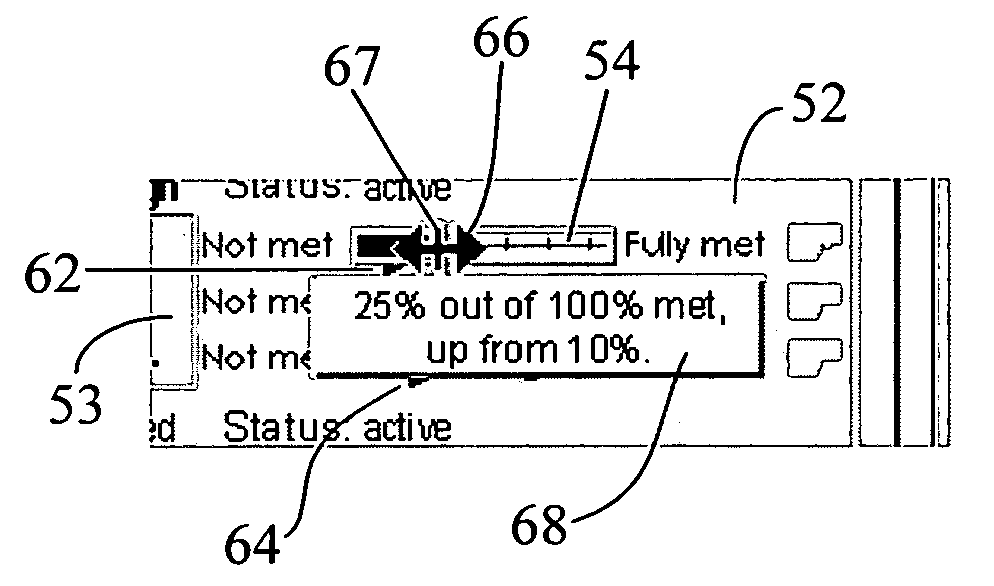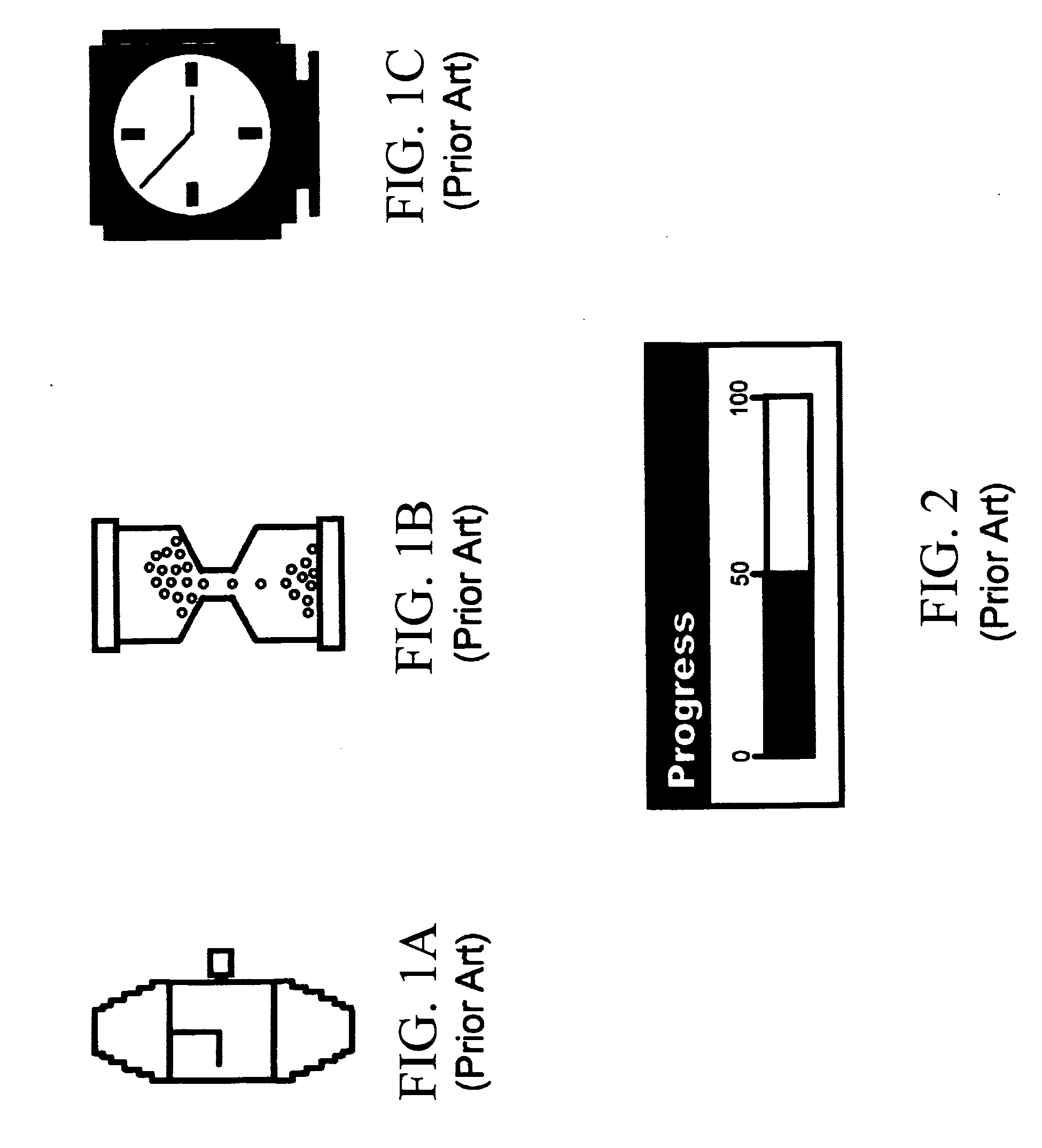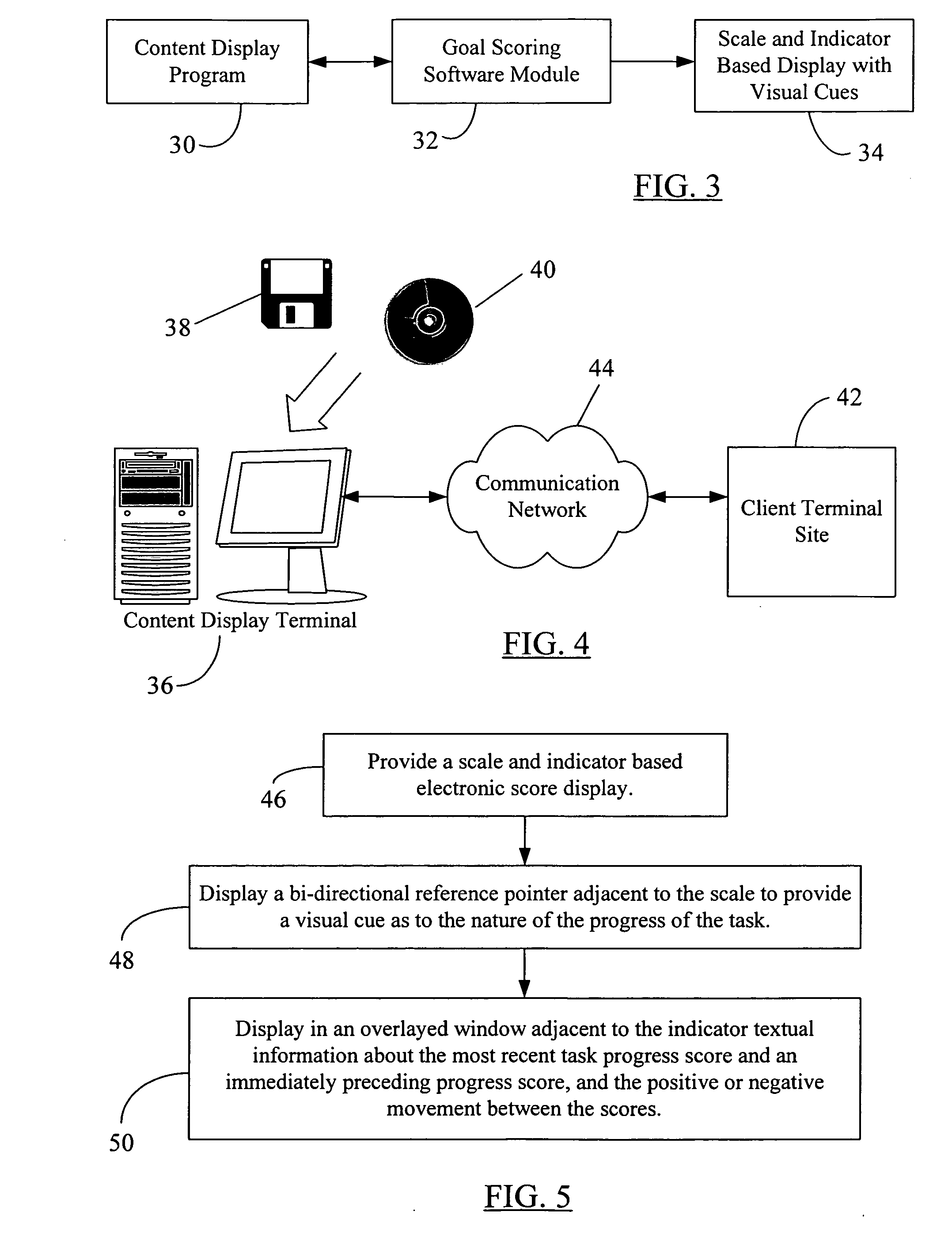Scoring mechanism with visual communication of more than one reading
a scoring mechanism and visual communication technology, applied in the field of electronic scoring mechanisms, can solve the problems of inability to monitor the progress of various complex and long-term activities, inability to use computer processor resources for window creation, updating, deletion, etc., and short wait tim
- Summary
- Abstract
- Description
- Claims
- Application Information
AI Technical Summary
Benefits of technology
Problems solved by technology
Method used
Image
Examples
Embodiment Construction
[0023] Reference will now be made in detail to certain embodiments of the present disclosure, examples of which are illustrated in the accompanying drawings. It is to be understood that the figures and descriptions of the present disclosure included herein illustrate and describe elements that are of particular relevance to the present disclosure, while eliminating, for the sake of clarity, other elements found in typical electronic content display devices or systems and software. It is noted at the outset that the terms “goal scorer”, “task progress monitor,” or “task status indicator” as used herein are used in their broadest sense to refer to task status or progress monitoring with any form of underlying electronic data input: text, numbers, symbols, graphics, or any other data format. Thus, the term “data,” as used hereinbelow, may refer to an electronic content in any form-text, symbol, graphics, etc. Furthermore, the term “task” is used broadly hereinbelow to include any activ...
PUM
 Login to View More
Login to View More Abstract
Description
Claims
Application Information
 Login to View More
Login to View More - R&D
- Intellectual Property
- Life Sciences
- Materials
- Tech Scout
- Unparalleled Data Quality
- Higher Quality Content
- 60% Fewer Hallucinations
Browse by: Latest US Patents, China's latest patents, Technical Efficacy Thesaurus, Application Domain, Technology Topic, Popular Technical Reports.
© 2025 PatSnap. All rights reserved.Legal|Privacy policy|Modern Slavery Act Transparency Statement|Sitemap|About US| Contact US: help@patsnap.com



